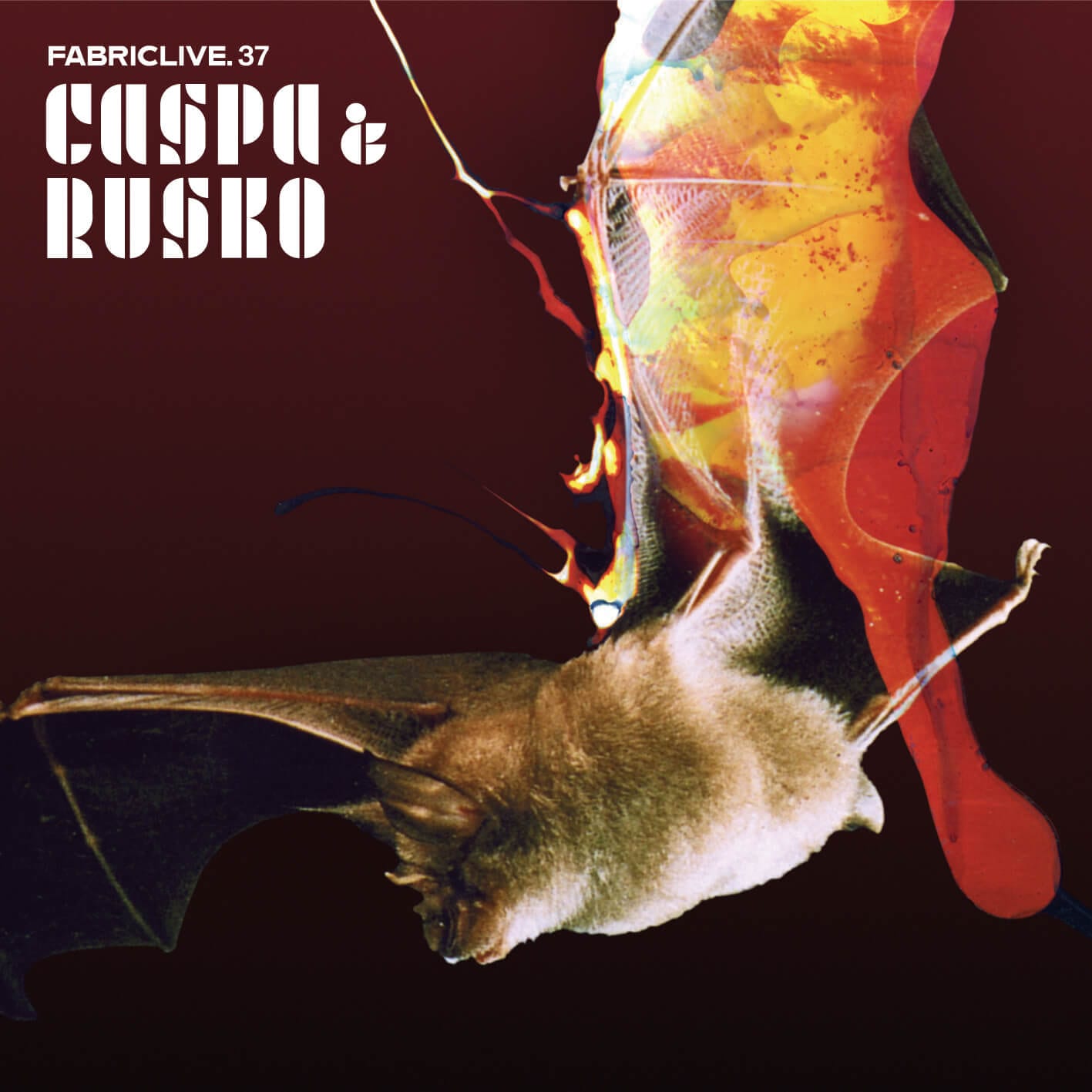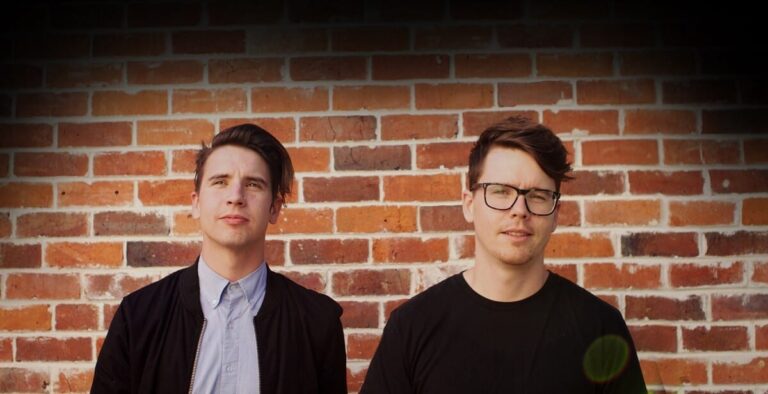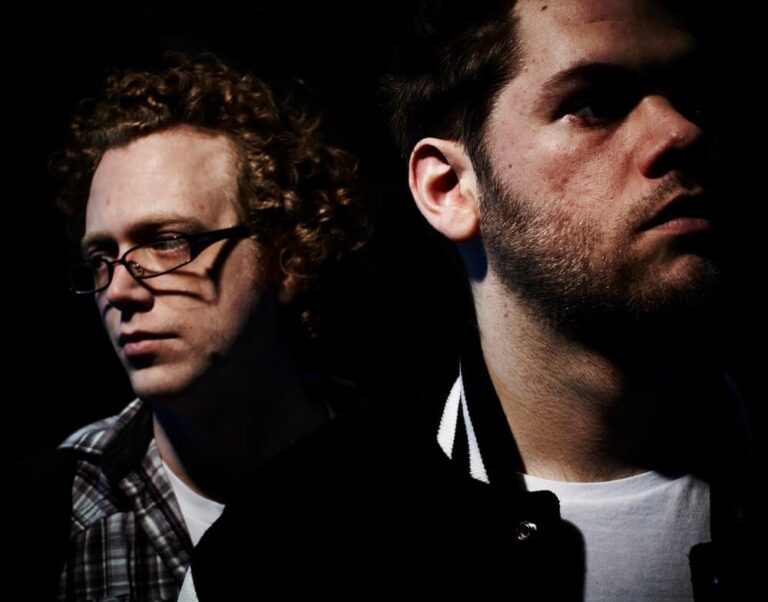December 10 2007: Caspa and Rusko gave the world an era-defining mix CD that changed the paths of a whole generation of aspiring producers and affected the momentum, direction and acceleration of dubstep forever. That mix was Fabriclive 37: Caspa & Rusko. This is its story.
Fabriclive 37 was truly a life changer for us, it is THE reason where we are today. From being avid bassline fans in 2007, never hearing dubstep before, to then listening to this album, we were instantly converted! From there we delved into dubstep and that was when we knew that dubstep is what we wanted to produce. Cheers Caspa & Rusko x x Gentlemens Club
I remember hearing dubstep in 2007 and 2008 and really not liking what I heard, so I dismissed it entirely. Then around Christmas 2008 I went round to Flux’s house and we were talking about music, and he played me a load of dubstep. Almost all of it was from Caspa & Rusko’s Fabriclive album. I remember hearing Cockney Thug in particular and realising dubstep was so much more exciting than I had previously realised. The big difference was the energy Caspa & Rusko were bringing compared with everything else I had heard previously. I went home and immediately started attempting to make dubstep. Hearing those tracks was undoubtedly a pivotal moment in my life and career! – Doctor P
I mean that mix paved the way for dubstep as it is today. When I first heard that mix I hadn’t heard anything like it, It totally blew my head off and it was some of the first dubstep I was listening to when I decided I wanted to start producing dubstep music. LEGENDARY – Mark The Beast
This mix changed my life, I hadn’t really heard or felt music like this before and this mix really shone a spotlight on it. I always think of Caspa and Rusko as order and chaos respectively. Essentially that’s what dubstep is all about in spirit; toeing the line and toying with the fringes of what’s possible and acceptable. Caspa and Rusko are a beacon for the creatives who want to toe that line and this mix was like a call to arms for me. – Flux Pavilion
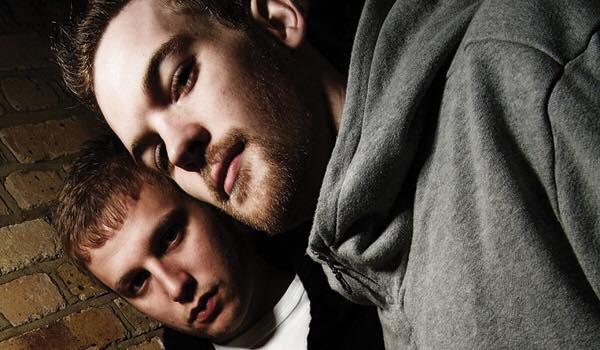
Order and chaos: Flux Pavilion’s description is as sharp as it is poetic. Caspa’s serious, no-bullshit heaviness and Rusko’s wily, unpredictably raffish funk. Dubstep’s yin and yang – both keeping each other in check, complementing each other musically and personally. The balance of extremes and the fizzy fusion in between: just like the music’s own pungent melting pot itself.
Of course the pot had been brewing for many years before Caspa & Rusko even met. The genre’s deepest tendrils can be traced as far back as far as 97/98 with tracks like Bill & Ben’s Tubby-touching space jam 8 Hand Dub and Groove Chronicles’ warm-skanking Black Puppet. By the early 2000s Hatcha had coined the phrase while the likes of Tempa, Horsepower Productions and Big Apple Records galvanised what dubstep was… And envisioned what it could be. By the mid 2000s Tempa’s long-established mix Dubstep Allstars series was developing and things were beginning to bubble under from its London nucleus and gradually seeping around the UK.
“Leeds and Bristol were the only other dubstep outposts at the time. Everything was still very London and I knew I needed to be there,” explains Rusko. “As soon as Caspa confirmed my first Dub Police vinyl was coming out – SNES Dub – I was already on my way to London.”
“That was late 2005,” says Caspa. “It was very quick compared to everyone else. His transition from where he was to where he got was rapid. It was Luke Envoy who put me on to him. I hit up Chris (Rusko) on MSN and told him I wanted to sign him and he moved down pretty much straight away. I think he was sleeping on Reso’s couch for a bit. Within months he was making tunes like Jahova and Cockney Thug and they were hitting left, right and centre. We’d started Dub Police at Herbal, we were signing loads of exciting artists. Things just took off in a mad way when Rusko arrived in London.”
It’s worth noting, just as an aside, that some of these tunes took root in a bizarre set of circumstances for Rusko.
“I’ll never forget turning up to his house and he’s sitting there in his coat, gloves, scarf and woolly hat with a can of Red Stripe and a massive zoot hanging out of his mouth,” laughs Caspa. “I was like ‘how do you know what keys you’re pressing with your gloves on?’ He just smiled and said ‘don’t worry I got it all worked out.’”
“We’d had severe winds and the windows had fallen out and our landlord was a massive wanker,” explains Rusko. “It was fucking cold! I had to sleep in that room for 12 weeks.”
Not that he spent much time in his house; by now dubstep was beginning to have an impact across the UK as more nights across the country started to pop up. If they weren’t holding down Caspa’s regular Thursday Dub Police night at Herbal, they were on the road. Regularly booked as a pair, Caspa and Rusko found themselves travelling up and down the country, playing upwards of five nights a week to eager young crowds, all switching onto the biggest UK musical phenomenon since jungle.
“The scene was popping,” explains Caspa. “You could feel the scene moving. It was ready and rolling, there was distribution, there were talented people buzzing in the studio and a real energy happening everywhere. You had all these crews doing their thing; DMZ, FWD, Bristol, Birmingham, Manchester. It was taking over and the world was ready. We’d been bubbling for years but it was time for people to know about it on a wider scale. It’s like ‘yo this is what the kids have been buzzing to and you need to hear it.’”
“It’s a mix that personally brings back many happy memories. 2007 was such an exciting time for dubstep and it was the year that my first releases started to drop. I remember getting a call from Caspa to say that Fabric had asked them to record the mix and he wanted to include some of my music. I seem to remember that they had basically had a few days to pick the tracks, get them licensed and record the mix. Both Caspa and Rusko had a quite a few tracks of mine on dub at the time and in they ended up using Africa VIP, Funhouse and a new bit me and Caspa had made called ‘Well ‘Ard’. After the mix dropped things just went crazy! Not just for Caspa & Rusko, or people included in the mix like myself, but the whole of the dubstep scene felt the impact the mix had on the wider dance music community around the world. Still to this day, those three tracks always get a big reaction when I play them live, largely down to legacy of that mix. To say that FabricLive 37 was a game changer is a massive understatement!” The Others
Timing was everything: When Fabric called Caspa & Rusko and asked if they’d be interested in doing a mix CD it wasn’t a standard request. It was a last-minute switch-up following a famously rejected mix by Justice. While most artists have a number of months to work on their mix, Caspa & Rusko had a matter of days.
“They weren’t happy with the Justice mix and pulled it. They were like ‘this is Fabric, this is not how we roll’ And they took a punt on us.” – Caspa
“The few months leading up to this we were at Fabric a lot. People were booking us a lot, we were covering a lot of DJs who weren’t showing up. We were in the office, doing some publishing stuff with them. We were in the club every week, our faces were in the building causing trouble so we were on people’s minds. It was like ‘ah Chris and Gary are around a lot and reliable – let’s throw them a bone!’” – Rusko
“I’ll never forget the call. We were on our way to a Halloween party in Sheffield. They told us to mix it the next week. We were driving back from Sheffield going through dubs and CDs working out the playlist, we tested a few mixes and on the Monday we were mixing it in the club. Tuesday it was mastered, Wednesday it was pressed and by Friday the promos had gone out.” – Caspa
When I first heard the Caspa and Rusko Fabriclive mix it completely blew my mind and changed EVERYTHING for me. I feel personally indebted to both of them forever for the influence that mix had on my life and career as a label head because without them, I’d probably still be working in Starbucks. There’s very few tracks or mixes that I can play that will instantly take me back in time to feel the same way I did when I first heard it and Fabric 37 is one of them. What fascinates me the most is the story that surrounds how the mix came to be… How Fabric needed a mix in four days and how they recorded it live in room 3… One take! There was no time to over think it and it all came together at the perfect moment in time, creating pure magic. Stuff like that doesn’t happen anymore. – Myro
The time limitations are what made the mix special in many ways. Not only are they the first DJs to record a mix in either of the club’s mix series to record a mix, they were the first, and only, to have just one day to licence their tracks.
“The speed of it all was insane but worked out for the best. If we had more time we’d have over-thought it, we’d have complicated it and ruined it.” – Caspa
“It would have been a very different mix. We had a day to clear as much as we could and had to pull in a lot of favours! The tracklist wouldn’t have had so many of our tracks on it if we had free reign. We couldn’t put as many Skream tunes on there, any DMZ tunes on there. But we got what we could, including Spongebob from Coki, which was a really big deal, and we did it live in a club off the cuff. No planning, just cracking on. We didn’t have enough time plan; another big stress of the day was cleaning the dubplates. They were so knackered because we’d been playing them so much and they don’t last forever. We had rags and cloths and cleaning stuff and little torches trying to clean up the dubplates! The main thing was ‘what can I get away with?’” – Rusko
“You can hear those crackles and hear the records being pushed along. It was raw as fuck mate. Gritty and intense. It had to come together in a way.” – Caspa
“It was integral that it was in the club with a grimy mixer that’s sticky with the booze from the night before. It all added to the vibe. They just pressed record and we just went with the flow, playing to the five members of staff in the club. The vibe of the mix was the structure of our sets at the time; starting off vibey, picking it up and bringing it back down. We couldn’t do it like that now but back then we were playing together five nights a week.” – Rusko
The fact it’s recorded live is testament to dubstep; the music is what matters, doing it live is raucous and upfront. As opposed to a polished studio album. This is how it is in the club, this is how it works live. I don’t think dubstep would have blown up in the way it did if it wasn’t for this mix. It solidified what we were doing. Up to that point there hadn’t been a mix of such a high-profile nature. It showed what we were doing was the right thing to do. We weren’t wasting our time. It went on to be seminal amongst our group of friends. So many genre-defining tunes on there. It solidified what was going to happen. If they hadn’t done this mix, the whole focus and development of dubstep would have been different. Fabric is synonymous with leading dance acts and for them to support it, it gave the whole genre a massive boost – Bar9
Exactly a week after they’d recorded the mix, Gary and Chris found themselves in a radio studio doing back to back interviews around the world. This was the moment they realised the mix might be a little bigger than they anticipated.
“We thought it might get us a few more gigs, that’s it! Suddenly we’re in this studio with a list of interviews from every corner of the world. We had to stop between calls to work out how to pronounce the station names because Gary kept getting them wrong. Fun fact: the station was one they’d used in Alan Partridge. That was cool as fuck. But yeah, we kinda started thinking ‘okay this is a bit mental…” – Rusko
“Everyone wanted to know about dubstep. Everything that had been bubbling for years before was coming to a head. We had The Guardian, Vice, even the fucking Sun all wanting to talk about it. Magazines, radio shows, newspapers from all over the world; Japan, Germany, Brazil, Romania. Everywhere. This changed everything. And to be honest I think there was a bit of tension and bitterness from some members of the scene because of that. I don’t think it’s looked upon like this anymore but there was a feeling that the first mix of this level should have been taken care of in different hands. – Caspa
“People said it was noisy and it was like dubstep-style clownstep and, yeah, it’s a bit raucous in places but it had the spectrum. You listen to Girl From Codeine City or Raindbow Teardrops or Forever and call them noisy? That mix was a true representation of what we were doing at the time. Maybe it wasn’t a true representation of the scene as a whole, but we couldn’t get those other tunes! It is what it is now. I’m glad it was us who had that opportunity. Just like everyone else who’s been involved in the scene since the early days, we fucking love the music and we were suddenly thrown into this position where we could take it as far as we could and the world wanted to hear it.” – Caspa
That Caspa & Rusko Fabriclive mix is one of the greatest sets to ever be recorded for dubstep. I remember the day it dropped and then buying the CD, putting it in and hearing all these new plates that I hadn’t heard on Dub Police or Sub Soldiers yet. Up until then, the only real recorded mixes to listen to were from Rinse FM or BBC. But this was the first dubstep live CD for me. I remember it was also the first time I got to hear Coki’s Spongebob which was so far ahead of its time, and influenced me so much as an artist. I don’t know where I would be without this mix. – 12th Planet
“We didn’t have a clue it would travel as far as it would. I don’t think either of us realised how much it would have such an impact in the US, especially. For a long time it was the only dubstep CD you could buy in a regular record shop. Fabric’s distribution was amazing so they got into those shops. Not just the coasts but across the whole of North America; Pittsburgh, Denver, Oklahoma, fucking everywhere. Suddenly there was this mad swell of interest and attention. Dubstep was always going to blow up globally but the album was the key that opened the door and when it was opened, it just didn’t stop…” – Rusko
But this is where the Fabriclive 37 story stops… And another, even more accelerated and divisive chapter for the genre, starts. During that period of four days, Caspa & Rusko captured such a pivotal moment in dubstep the mix still lives in its own time. The 12th highest-selling Fabric mix of all time, not only does it document the very moment dubstep went ballistic, not only is it the mix that switched countless fans and inspired a new generation of dubstep producers, but it also captures the essence of the genre’s extremities and contrasts and melting pot at the time: From the sublime soul of D1’s I’m Lovin’, or the yearning strings of Caspa’s Cockney Violin, to the industrial strength fuzzy bass sludge of Orien’s Look At My Eyes and the brazen ridiculousness of Rusko’s Hammertime… And that’s before we even get to the likes of Cockney Thug, The Terminator, Mr Chips or Jahova.
Fabriclive 37 (and specifically Cockney thug) is pretty much the reason I have a career today. I honestly wasn’t really into any dubstep that I’d heard up until then, and we had been (with very little success) trying to break through as drum & bass producers, however after hearing the genre and tempo in a different light (thanks Rusko), it gave us the original spark we had to start playing around with beats at 140bpm.– Dodge & Fuski
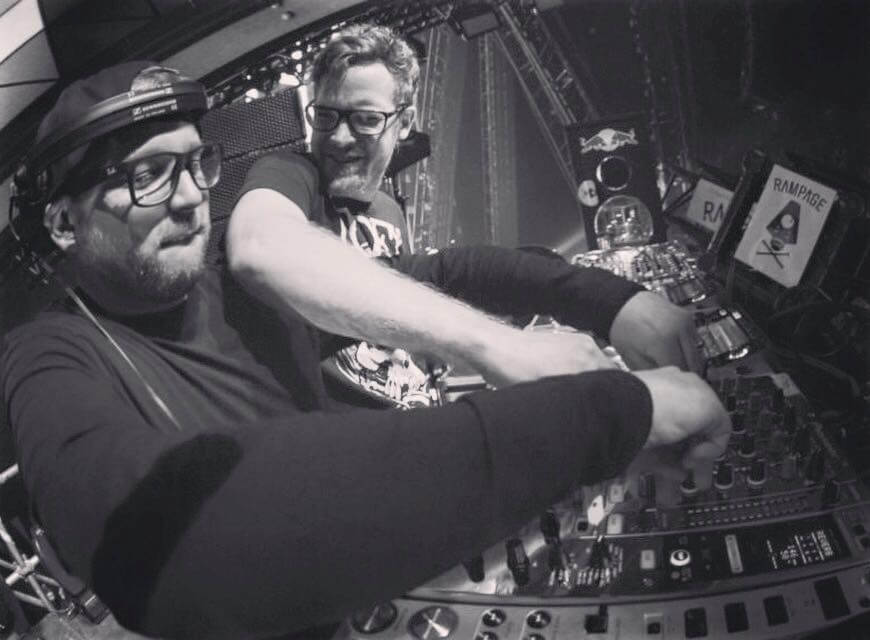
A monumental moment in the history of dubstep. Fabric was a regular haunt for me and FabricLive.37 is something I’ll never forget. I’m dropping half of the tunes in my sets still. They’ll never get old… Legendary. A lot of my stuff nowadays gives a nod to the classics, and that’s cos It just had such an impact on me. I owe a lot to this release. – Conrank
Knowing how it came together in such an intense set of circumstances, after an already turbo-charged 18 months since Rusko had moved down to London, and was made with a raw live-mixed honesty under high pressure deadlines makes it even more timeless and remarkable. As does the fact that, 10 years later, both men are in the most inspired positions they’ve been in for years.
Caspa, who has fiercely flown the flag for dubstep during its most lows, has been steadily feeding us with consistently heavy, stark and unabashed underground wounders. Especially since his 500 album. His monthly Vibrations series has been a constant source of smouldering subs for well over a year, last month’s Bassrush EP was a three track message of minimal menace and he’s about to follow the likes of dBridge, Nomine and Akcept and appear on Youngta’s ace new Sentry label.
Rusko, meanwhile, is the vibiest we’ve ever seen him. Two months since he’s been cleared of cancer, he’s still physically recovering but when the time is right, we suspect he’s going to drop a whole new level of wily, unpredictably raffish funk. It turns out the studio was the best solace from his sickness…
“In 2018 the plan is to drop shit loads of music, hit the road and come back blazing. It’s given me the chance to reset on everything I want to do. Cancer’s taken enough from me so I’m going to take this from it. During that time while I was sick I wrote music. It was a crutch that got me through the worst times in my life and was the only thing that took my mind fully off the cancer. So effectively I’ve just spent the best part of a whole year making beats Monday to Sunday. Just music for music’s sake. I haven’t had that since I was 20 and I’ve never felt this armed with tracks. I get giddy when I think about it. You’ve been warned!” – Rusko
Buy / replace your old battered copy of Fabriclive 37: Caspa & Rusko directly on Fabric’s store
Follow Caspa: Facebook / Soundcloud / Twitter
Follow Rusko: Facebook / Soundcloud / Twitter
